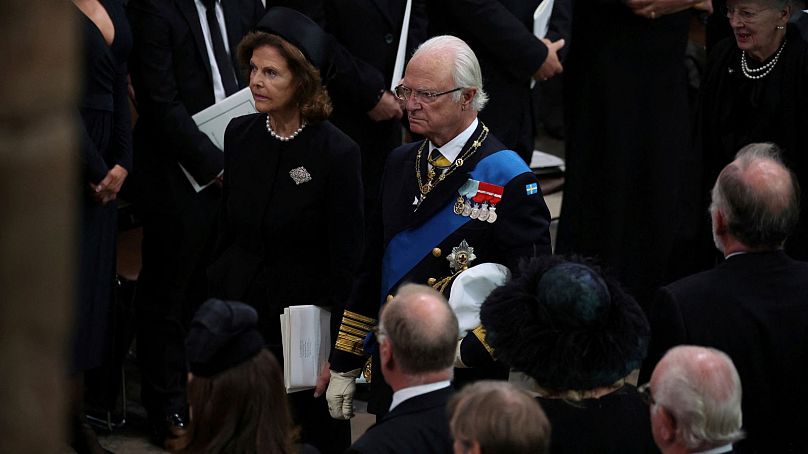He's the first king in the Swedish monarchy’s history to reach 50 years on the throne and is the second-longest reigning European monarch alive.
Sweden has this week been marking the 50th anniversary of King Carl XVI Gustaf’s accession to the throne with four days of celebrations that culminate with a military parade through the capital.
Carl Gustaf, 77, is the first king in the Swedish monarchy’s more than 1,000-year history to reach 50 years on the throne.
Following the death of Queen Elizabeth II last year, he’s the second-longest reigning European monarch alive today, after his cousin Queen Margrethe II, who celebrated her 50th anniversary on Denmark’s throne last year.
Margrethe and King Harald V of Norway were among the dignitaries on the guest list for the jubilee events. They included an opera performance at Drottningholm Palace outside Stockholm, the residence of the king and his wife, Queen Silvia; a church service at the Royal Palace in Stockholm; banquets and a televised speech to the nation by the king.
On Saturday the king and queen will ride in a horse-drawn carriage through downtown Stockholm along with 3,000 servicemen and women from the Swedish Army, Navy and Air Force.
Security is tight after Sweden raised its terror alert to the second-highest level following a string of public desecrations of the Quran that sparked angry demonstrations across Muslim countries and threats from militant groups.
As in neighbouring Scandinavian countries, the Swedish monarch has a ceremonial role as the head of state but no political power. Many Swedes also regard the king as a symbol of the nation and a unifying figure during times of crisis.
“I think what mostly stands out for Swedes is the way he has sort of held the country together in times of unrest and when we have gone through difficult times,” royal watcher Roger Lundgren said, pointing to the 1986 murder of Prime Minister Olof Palme and the December 2004 tsunami in South East Asia which killed more than 500 vacationing Swedes.
More recently, Carl Gustaf uncharacteristically spoke out against Swedish authorities’ handling of the COVID-19 pandemic, saying the country failed to protect the elderly in care homes. Sweden stood out for its pandemic strategy, which was largely based on voluntary measures rather than mandatory lockdowns.
Carl Gustaf was 27 when he ascended the throne on September 15, 1973, upon the death of his grandfather, King Gustaf VI Adolf. Carl Gustaf was first in line to the throne because his own father died in a plane crash when he was an infant.
Years later, the king spoke of his sense of loss during a memorial service to victims of the tsunami.
“Many children have lost one or both of their parents,” he said. "I think I know what that means. I have been such a child myself."
The royal family remains popular in Sweden, despite occasional scandals in the tabloid press surrounding the king’s private life. Polls show a clear majority of Swedes are in favour of retaining the monarchy, even though critics call it an anachronism that doesn't belong in a modern democratic society.
The king and queen have three children, Crown Princess Victoria, Prince Carl Philip and Princess Madeleine. As the eldest sibling, Victoria jumped ahead of Carl Philip in the line of succession when Sweden in 1980 decided that the monarch’s eldest child, rather than the eldest male child, should inherit the throne.
Carl Gustaf made headlines in January this year when he appeared to suggest that the change in the succession rules had been unfair to Carl Philip. He backtracked in a statement issued by the palace a few days later, saying “it pains me deeply when, in retrospect, I read comments that suggest that I would not stand behind my daughter, Crown Princess Victoria, as Sweden’s heir to the throne.”
Carl Gustaf may be Sweden's last male monarch for a while as Victoria's first-born child was also a girl. Princess Estelle, now 11, is second in line to the throne, behind her mother.












